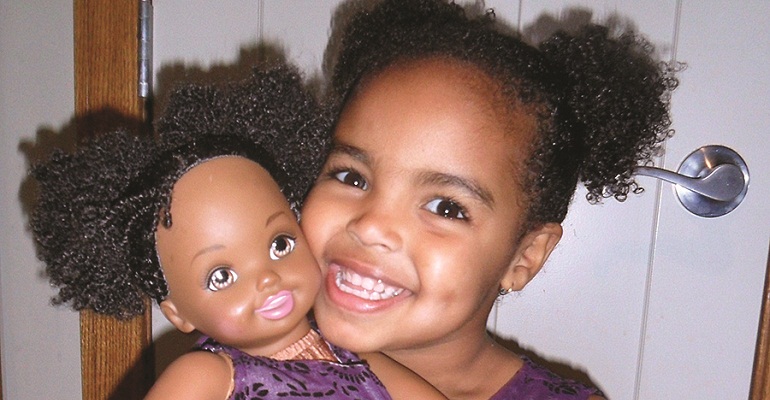Mama, when I grow up, I want to have skin just like yours!
Daddy, why do the other kids call me black? I’m brown.
I wish I were your color. I hate being tan all the time.
These are just a few of the comments my preschool clients have made to their parents. The parents tend to reassure their child that her ethnicity is beautiful. Some even say they wish they could be their child’s color. While well-meaning, such responses don’t necessarily provide what these kids need.
Examine Your Attitude About Race
When children are adopted transracially, they fare consistently better when raised in families that acknowledge, rather than deny, differences, and speak openly about race.
Parents avoid discussing race for many reasons. Some think race is a subject that can be saved for later—”But she is only four—do we need to bring this up now?”—or worry that the topic will upset their child. Others may shy away from the subject owing to their own discomfort. I suggest that parents who are debating whether to talk ask themselves:
- What messages about racial differences was I taught while growing up?
- How comfortable am I with adults of my child’s race? Have I ever attended a social or cultural event where I was the only member of my racial group? How did it feel?
Not only is it your duty to talk about race with your child, you must be the one to lead the conversation. Preschoolers begin to identify racial differences, and may even have some basic feelings (sadness, confusion) about those differences, but they are not yet developmentally capable of understanding the nuances and subtleties of race. Parents who take the lead demonstrate that the topic is open for discussion, does not upset them, and is an important part of who the child is (though not the only important part). Mary, the mother of a five-year-old adopted from China, told me: “I was scared about starting this conversation, but it was also a huge relief to me to know that I didn’t have to wait for her to ask questions.”
First Talks About Differences
Even if your preschooler is an avid talker, when tackling a potentially difficult subject like race, she may be most easily engaged through play. I frequently recommend an activity called “Same and Different,” developed by the Theraplay® Institute (theraplay.org).
- Have your child sit in your lap. Sit in front of a full-length mirror, or hold up a large handheld mirror.
- First, describe all the things about your faces that are the same. It’s delightful to hear your child announce things like, “We both have a nose!” Next, move on to differences. This should naturally give rise to discussions about race. Your child may question why her eyes are a different shape, or why her skin is brown or tan and yours is peach.
- Acknowledge the differences your child notices, and offer basic explanations. “People usually inherit their skin color from their birth parents. Your birth mom’s skin is the same beautiful shade of brown as yours.” “People from your birth country tend to have eyes the same shape as yours.”
Have fun with this activity. Let your child know that it’s OK to talk about race. By normalizing differences and explaining why they exist, you’ll help your child begin to build racial identity and, hopefully, pride.
Photo: Kiya (3, Ethiopia) poses with her favorite doll. Uploaded by ethioguatemama.



